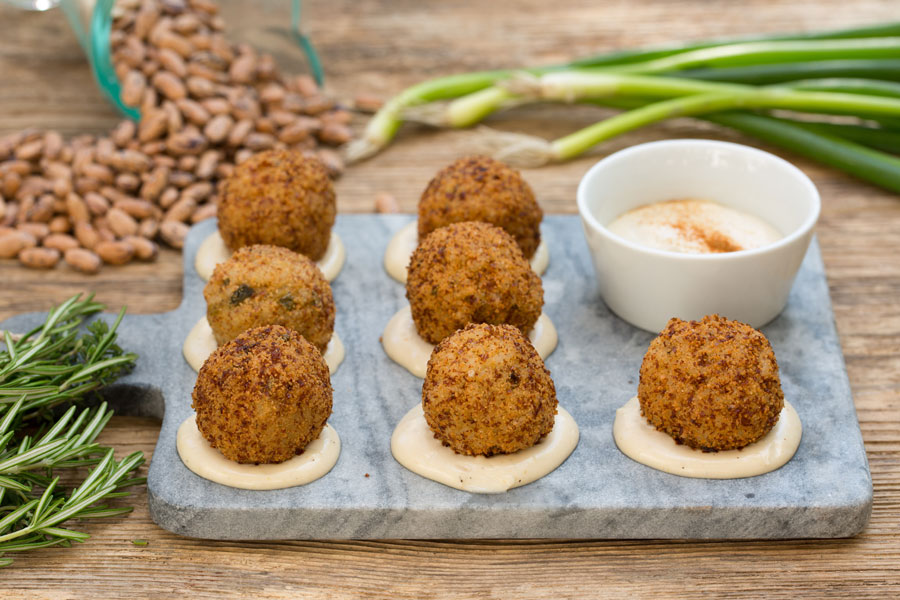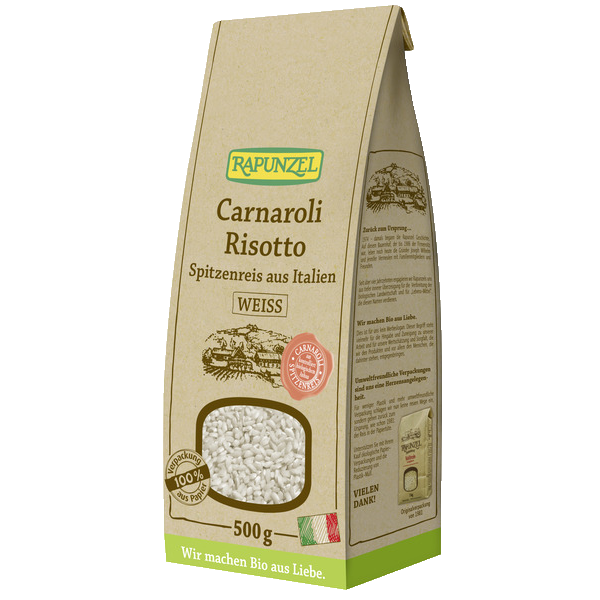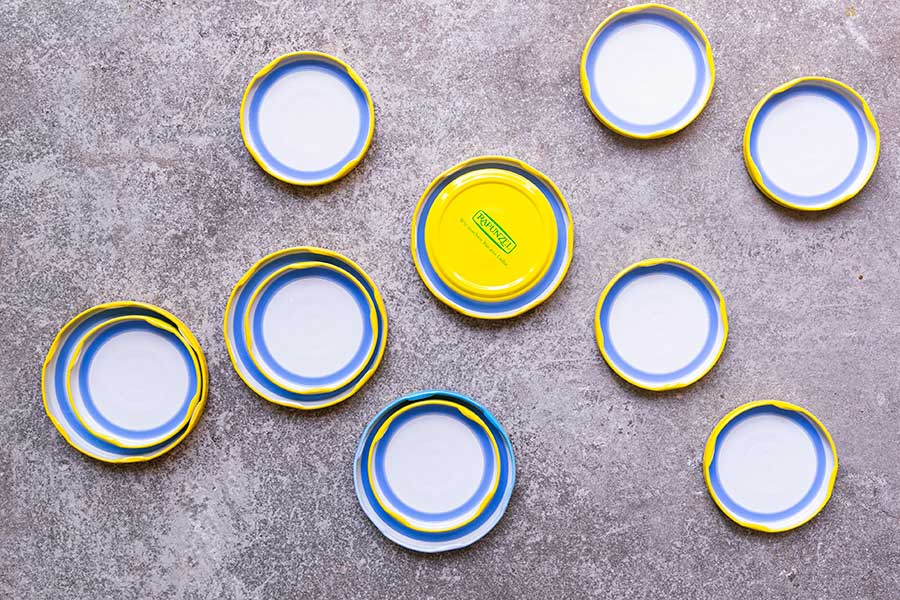The ideal Risotto rice for the ambitious gourmet cuisine! Exceptionally creamy and full-flavored with the typical 'al dente' experience. Carnaroli rice is produced in the Piemont, a traditional Italian rice growing region. It is cultivated organically with a lot of care and experience in the Northern Italian Po valley.
Ingredients
Carnaroli rice* white
* = ingredients from organic farming
** = from biodynamic agriculture
Carnaroli rice* white
* = ingredients from organic farming
** = from biodynamic agriculture
Characteristics
cultivated in Europe, packed by Rapunzel
Usage
Perfect for all kinds of risotto variations.
Preparation Instructions
Risotto cooking method (for approx. 4 portions) Steam 250g rice in some butter or olive oil together with chopped onion until glassy. Deglaze with white wine or broth. Slowly add hot broth until Risotto gets creamy. Stir Risotto continously while cooking. Cooking time: approx. 20 minutes.
cultivated in Europe, packed by Rapunzel
Usage
Perfect for all kinds of risotto variations.
Preparation Instructions
Risotto cooking method (for approx. 4 portions) Steam 250g rice in some butter or olive oil together with chopped onion until glassy. Deglaze with white wine or broth. Slowly add hot broth until Risotto gets creamy. Stir Risotto continously while cooking. Cooking time: approx. 20 minutes.
Additional information
Preparation
After harvesting, the rice is cleaned, husked, polished and packed.
Produced in
Italy
Country of origin
italian agriculture
Origin of the main ingredients
Italy
Quality
EU Bio-Logo
Storage advice
Store in a cool and dry place.
Legal name of the food product
Carnaroli Risotto rice
| Calorific value | 1480 kJ / 349 kcal | |
| Fat | 0,60 g | |
| of which saturates | 0,10 g | |
| Carbohydrates | 77,70 g | |
| Sugar | 0,20 g | |
| Dietary fiber | 1,4 g | |
| Protein | 7,40 g | |
| Salt | 0,010 g |
Allergens
| Eggs and products thereof | not contained | |
| Peanuts and products thereof | not contained | |
| Fish and products thereof | not contained | |
| Cereals containing gluten or cereal products | Possible in traces | |
| Crustaceans and products thereof | not contained | |
| Milk and products thereof including lactose | not contained | |
| Lupins and products thereof | not contained | |
| Nuts and products thereof | not contained | |
| Celery and products thereof | not contained | |
| Mustard and products thereof | not contained | |
| Sesame seeds and products thereof | not contained | |
| Soy and products thereof | Possible in traces | |
| Sulfur dioxide or sulfites (more than 10mg/kg or 10 mg/l SO2) |
no | |
| Molluscs and products thereof | not contained |
Mit großer Sorgfalt pflegen wir unsere Online-Produktdatenbank. Dennoch können wir vereinzelte Fehler nicht ausschließen. Daher bitten wir Sie, diese Angaben immer mit dem Etikett des jeweiligen Produktes zu vergleichen. Sollten Ihnen Unstimmigkeiten auffallen, sind wir dankbar für einen Hinweis an kundenservice@rapunzel.de.
FAQ about Carnaroli Risotto rice white
Heavy metals such as arsenic occur naturally in our environment (air, soil, water, rocks, etc.). The rice plant absorbs arsenic through the soil and accumulates it in the grains much more than other plants. The arsenic content varies depending on the growing region.
The majority of our rice varieties come from northern Italy. There, the arsenic contamination of the soils is significantly lower than in southern Italy, for example. The arsenic levels in all our rice varieties are below the legal limits: These are 0.2 mg/kg for polished or white rice, 0.25 mg/kg for parboiled and husked rice and 0.1 mg/kg for rice used for infant formula. There is no limit for wholemeal rice. Our Basmati rice from India shows the lowest values of all Rapunzel rice varieties. Often, no arsenic is detectable here at all.
Arsenic in rice is mainly deposited in the silverskin, which is why arsenic levels are lower in white, husked rice than in whole grain rice.
The following applies to all Rapunzel rice varieties, whether whole grain or hulled, and also to our rice noodles: the heavy metal content is so low that, according to European eating habits, you could consume any of our rice varieties on a daily basis.
Background information on rice
Background information on rice
We generally recommend washing all cereals before preparation, as they are only cleaned mechanically and dust can still adhere to the cereal. With white rice, this happens when the rice grains are milled. Washing removes the dust.
mehr erfahren
mehr erfahren
The grey, sticky edge after cooking occurs with many natural cereals and brown rice. The foam that appears during cooking comes from the rice's own starch and from small particles from the shell. These particles detach from the rice grain during cooking and may then stick to the rim of the pot. This is an indication that the product is natural.
mehr erfahren
mehr erfahren
Recipe with Carnaroli Risotto rice white


Borlotti Arancini


